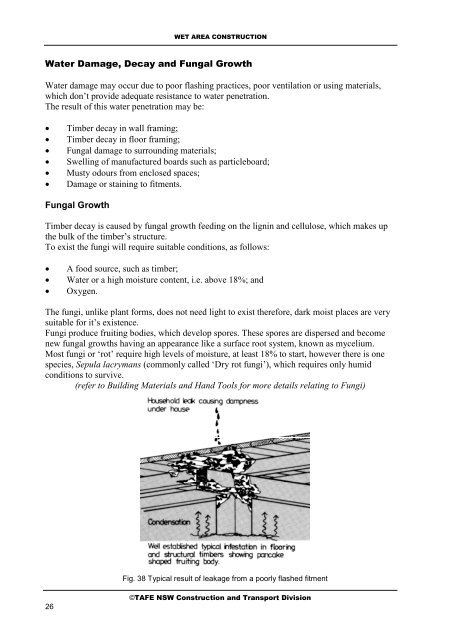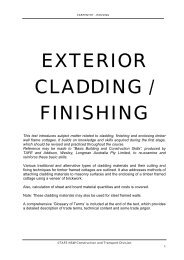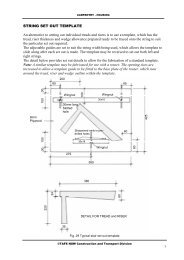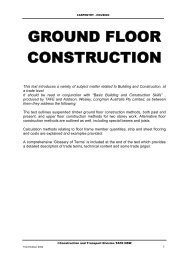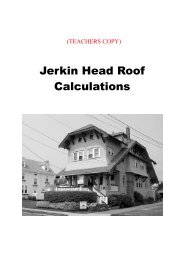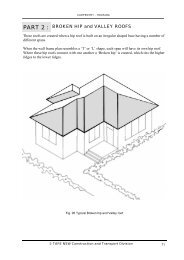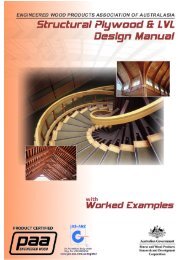TAFE wet area text.pdf - Mike's Trade Wiki
TAFE wet area text.pdf - Mike's Trade Wiki
TAFE wet area text.pdf - Mike's Trade Wiki
Create successful ePaper yourself
Turn your PDF publications into a flip-book with our unique Google optimized e-Paper software.
WET AREA CONSTRUCTION<br />
Water Damage, Decay and Fungal Growth<br />
Water damage may occur due to poor flashing practices, poor ventilation or using materials,<br />
which don’t provide adequate resistance to water penetration.<br />
The result of this water penetration may be:<br />
� Timber decay in wall framing;<br />
� Timber decay in floor framing;<br />
� Fungal damage to surrounding materials;<br />
� Swelling of manufactured boards such as particleboard;<br />
� Musty odours from enclosed spaces;<br />
� Damage or staining to fitments.<br />
Fungal Growth<br />
Timber decay is caused by fungal growth feeding on the lignin and cellulose, which makes up<br />
the bulk of the timber’s structure.<br />
To exist the fungi will require suitable conditions, as follows:<br />
� A food source, such as timber;<br />
� Water or a high moisture content, i.e. above 18%; and<br />
� Oxygen.<br />
The fungi, unlike plant forms, does not need light to exist therefore, dark moist places are very<br />
suitable for it’s existence.<br />
Fungi produce fruiting bodies, which develop spores. These spores are dispersed and become<br />
new fungal growths having an appearance like a surface root system, known as mycelium.<br />
Most fungi or ‘rot’ require high levels of moisture, at least 18% to start, however there is one<br />
species, Sepula lacrymans (commonly caled ‘Dry rot fungi’), which requires only humid<br />
conditions to survive.<br />
(refer to Building Materials and Hand Tools for more details relating to Fungi)<br />
26<br />
Fig. 38 Typical result of leakage from a poorly flashed fitment<br />
©<strong>TAFE</strong> NSW Construction and Transport Division


